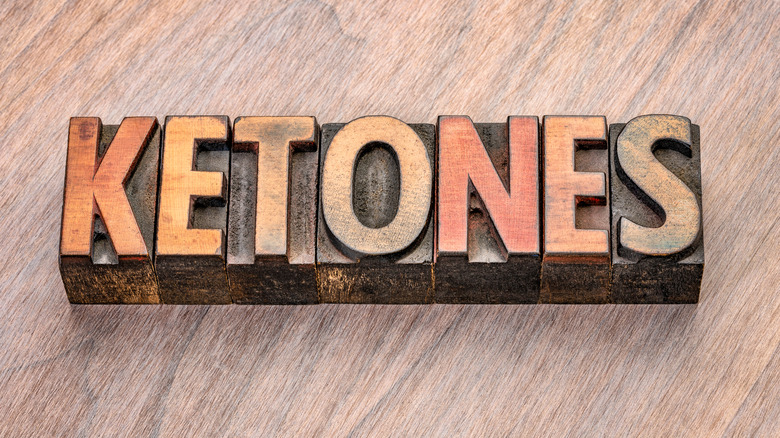What Happens To Your Body When You're In Ketosis
If you've ever been on the ketogenic ("keto") diet, you have likely experienced ketosis. As defined by EverydayHealth, ketosis is "a natural metabolic state that occurs when your body doesn't have enough carbs (or glucose) for energy, so it burns fat instead. As your body breaks down fat, it produces an acid called ketones or ketone bodies, which becomes your body and brain's main source of energy."
According to Everyday Health, putting yourself into ketosis is not so easily achieved. This is because you need to drastically minimize your intake of carbohydrates, but many of the foods that you eat — including healthy natural foods like fruits, nuts, and non-starchy vegetables — can be pretty high in carbs.
To know whether or not your body is in ketosis, Everyday Health suggests checking your ketone level. A normal blood ketone level is under 0.6 millimoles per liter (mmol/L), so, keep your eyes open for a higher number than this.
If you've committed fully to restricting your intake of carbohydrates or you are engaging in intermittent fasting, it's possible that your body will enter ketosis in about three to four days. Physical signs you've entered ketosis can include: weight loss, diminished appetite, halitosis, and constipation or diarrhea. For more definitive verification, you can purchase a ketone urine test at your local drug store or use a blood sugar meter that measures ketones.
How to get your body to enter ketosis faster
If you're looking to hop an express train to this metabolic state, there are measures you can take to enter ketosis faster.
First and foremost — really reduce those carbs. Healthline suggests that you get your carb intake down to between 20 and 50 grams a day and advises against eating out since this makes it harder to track carbs. And there's more than just secrets in that "secret sauce" — that's right, condiments have carbs, too. So be mindful about how much dressing you use so you don't sabotage your keto-friendly salad. And try to get 70 percent of your calories from foods that contain healthy fats, such as nuts, extra virgin olive oil, avocados, meats, eggs, and fatty fish such as salmon.
Also, consider leveling up your weekly workout routine if you can safely do so. The extra energy you expend will potentially help your body use up its glycogen stores and kick your liver into ketone production even faster.
If, however, after all your efforts, you have not entered ketosis in four days, no need to be concerned. Healthline points out that it's not uncommon for it to take a week to enter ketosis based on various factors, such as age, metabolism, how well you are adhering to the keto diet, and your exercise regimen. Try reviewing your carb intake to see where you can make adjustments, as well as gradually increasing your workout time for that extra push.


